In Danger: Men At Work
Joseph Endico doesn't remember the sound of the rope snapping. He doesn't remember seeing his harness give way, or feeling his head hit the ledge of the window as he fell three stories from the collapsing scaffolding onto the grass below.
"I remember waking up on the ground a little while later with a towel on my head, and people saying, 'you're going to be okay,'" Endico recalled recently, the scar from the metal staples used to close his wound still visible on his shaved head 19 months later.
Endico did survive and discussed the accident matter-of-factly as he sat in his lawyer's office last week. But he is not okay. Still unable to return to his job, Endico is living off of workers compensation, with the help of his family.
He says he had never heard of another scaffolding accident before his own, but that since his fall he notices them everywhere. Its not just scaffolding: The most recent statistics count 29 construction related deaths in the city in the year leading up to September 30, 2006, a 60 percent increase from the 18 deaths the year before.
In recent weeks public officials have taken several steps responding to issues of workplace safety. Councilmember Erik Martin Dilan introduced three bills specifically related to scaffolding safety, following up on a mayoral taskforce. Governor Eliot Spitzer, meanwhile, announced a plan to reform workers compensation so that it better serves both injured workers and their employers, a balance that has evaded state policymakers for years.
MORE CONSTRUCTION, MORE DANGER
New York City's construction industry has become increasingly dangerous as the city experiences an unprecedented building boom. The city is issuing residential building permits at near record numbers, and huge projects are being planned and constructed around the city. (See slide show.) About 123,000 New Yorkers work in construction, according to the New York Building Council, and the number of construction jobs is increasing so rapidly that employers worry about finding enough workers to fill them.
As the industry expands, its composition is changing. About half of the construction workers in the city are immigrants, and over one-quarter are not proficient in English. 75 percent of New York's construction jobs remain unionized, four to five times the national average. But with so much construction going on, the number of smaller non-union employers is growing.
It is non-unionized immigrants working on smaller jobs who are being injured in disproportionate numbers. Over half of the deaths over the most recent year involved companies with fewer than 10 workers, and almost three quarters of those killed were immigrants or workers with limited proficiency in English.
Unionized employers take this as a sign that their fly-by-night counterparts working smaller jobs should be subject to stricter regulations. Larger construction sites are subject to more stringent safety regulations. Any construction project with buildings over 14 stories tall must keep a site safety coordinator on site at all times, for instance, and companies building scaffolding over 40 feet tall must apply for a building permit. Lou Coletti, head of the Building Trades Employers' Association, an organization that represents union employers building large projects, says that city officials would do best to extend safety requirements to smaller, non-union employers.
"We know our members do it because we invest $50 million a year," he said. "The non-union sector invests nothing."
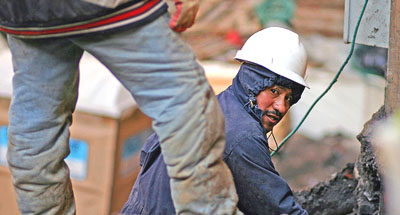
Non-union immigrant workers are at the highest level of risk
SAFER SCAFFOLDING
Construction is a dangerous job, and workers at or below street level are hardly immune to danger. A construction firm on Staten Island, for instance, pleaded guilty to negligent homicide last month after one of its workers was buried when the trench he was working in collapsed. But city officials are paying special attention to falls, particularly those relatd to scaffolding.
Falls are the most common cause of construction deaths in New York. Locally, such deaths rose from nine to 17 over the last year. When Mayor Michael Bloomberg planned City Hall's response to the increase in construction deaths, his first target was hanging scaffolding. His administration formed a task force to establish tougher regulations and has adopted the recommendations it made in December.
Acting on these recommendations, the mayor has included $4 million in his budget for the upcoming year to create a scaffolding safety unit in the buildings department with 10 new inspectors to enforce existing safety regulations. Another $2 million will be used for training and outreach in Spanish, Chinese, Polish, Russian, and Urdu.
Councilmember Dilan, a member of the task force, introduced three bills that would make several aspects of its recommendations city law. They would require construction firms to notify the buildings department when they plan to use C-Hook scaffolding, a type of hanging scaffolding involved in over half of the scaffolding deaths in 2006. His bills would also increase fines for violators, and require daily written inspections of scaffolding by site supervisors.
The mayor also called on the federal government to increase its investment in local Occupational Health and Safety Administration inspectors. This echoes criticism from worker advocates who blame the lax approach of Bush administration for the fact that 2004 was the first year in a decade in which the nationwide workplace fatality rate actually rose. In its first five years in office, the administration "failed to issue any significant safety and health rules, compiling the worst record on safety and health issues in [Occupational Safety and Health Administration] history," according to the AFL-CIO report Death On The Job.
New York State fares better than most others, ranking ninth best in terms of worker fatality rates and imposing harsher fees on violators. Even so, the AFL-CIO calculates that if federal inspectors in New York continue their work the current rate, it would take 99 years for them to visit each workplace once.
Joel Shufro, executive director of the non-profit advocacy group New York Committee for Occupational Safety and a member of the task force, doubts Bloomberg's calls for help from Washington will change this.
"[The mayor] would have to be demanding a different administration with a different philosophy of enforcement," said Shufro. "This one, in terms of safety on the job, is bankrupt."
AFTER THE FALL
Even for construction workers who survive, accidents on the job often change their lives forever. Joseph Endico had been working on construction sites for decades, and on scaffolding almost daily for the three years leading up to the morning of June 24, 2004, when he was asked to help install rubber waterproofing on the third story of an apartment complex. There was a harness waiting for him on the scaffolding as well as a rope grab, which serves as a backup if the harness fails. He put them on.
During the part of the morning that Endico doesn't remember, one of the frayed ropes holding up the scaffold he was standing on gave way. His harness and rope grab failed in succession, and he fell three stories, hitting his head on the way down.
The fall left him with a concussion, as well as serious injuries to his back and neck. After a night in the hospital and six weeks at home in bed, Endico started a physical therapy regimen that continues today. He recently had surgery on his shoulder.
The benefits that workers like Endico are entitled to, and what legal recourse they can take against their employers, have been perennial sources of tension at the state level, where much of the regulations regarding injured workers are written.
Today, Endico's only income is workers compensation, a benefit that he will continue to receive as long as he is unable to work. Workers advocates and employers alike have long complained about the state's program. The $400 Endico receives weekly is the maximum benefit, even though in his case it is about half his previous salary and does not include health insurance. Despite the relatively meager payouts, employers put more money into the program than almost anywhere else in the country.
Bit despite such failings, changing workers compensation has long been bogged down in Albany. On the last day of February, however, Governor Eliot Spitzer announced a deal on workers compensation that he and other state officials brokered with labor and business leaders. The agreement increases the maximum benefit to injured workers, but caps the amount of time they can spend on workers compensation, while also taking steps to cut down on fraud. Spitzer estimates it will save $500 million a year, resulting in 10 to 15 percent lower premiums for employers.
Unrelated to the recent changes to workers compensation is a controversy over lawsuits involving those hurt on the job. Recipients of workers compensation are not allowed to sue their employers. State law grants an exemption, however, to those who were hurt in falls. Under this law, employers whose workers operate at heights are liable for safety and cannot pass that liability on to subcontractors. Lawyers and advocates representing injured workers believe this law saves lives by holding employers responsible. Employers are also not allowed to argue that the workers own negligence caused an injury. For over a decade, employers groups have been trying to get Albany to repeal it, saying it raises construction costs and penalizes employers for workers' mistakes.
"The employers hate it, hate it, hate it," said Shufro, "and the lawyers love it, love it, love it."
Endico is suing his employer, Electchester Third Housing for damages under this law. A lawyer for Third Housing declined to comment on the specifics of the case for this article.
Endico said that he would like to see safety inspectors present on all work sites at all times. He believes it is probably too late for him, however, since his injuries will probably keep him from ever returning to a construction site. Even if he were physically able, Endico has developed a newfound fear of heights that would keep him from the kind of work he had been doing all his life.
Today, even climbing the ladder to clean the gutters at his Throgs Neck home seems like too much for Endico. He asks his nephew do it for him, instead.
"I wouldn't go up no more," said Endico when asked about returning to a construction site. "I counted on my harness. What would you count on? It might fail again."
Â
Charting New York's Health

Many New Yorkers apparently have been keeping their new year’s resolutions to live healthier lives. And their resolve has produced results. The city health department recently released figures showing that New Yorkers are living longer than in the past -- and longer than Americans as a whole. A child born in the city in 2004 can expect to live to be 78.6 years old -- almost 10 months more than a child born in 2001.
The information came in the city government’s Annual Summary of Vital Statistics , one of the many measures of New Yorkers’ health that the Bloomberg administration, which has made public health a priority, compiles and releases.
Included among these are the Community Health Profiles. Visitors to the department Web site type in a ZIP code to be directed to a pdf file with an array of numbers and facts on their neighborhood, including rates and causes of premature death, how their neighbors assess their own health, the percentage of community residents who smoke and so on. And the profile compares the specific community to the borough and to the city as a whole.
The health department considers these profiles an important tool in figuring out where health problems exist, in establishing programs to address those programs and in helping New Yorkers take better care of themselves.
Cari Olson, a master of public health and the lead author of the report, spoke with Gotham Gazette about measuring health in New York City.
A HEALTHIER CITY
Gotham Gazette: What conclusions can we draw from all the information in the Community Health Profiles?
Cari Olson: Although, overall, we see great improvement in the health of New Yorkers, there are still major health differences between neighborhoods. If you look at the HIV-related death rate in New York City overall and in every single neighborhood, it has dropped dramatically in the last 10 years. It’s an example of New Yorkers, public health professionals and others working together to improve health. At the same time, if you look within the borough of the Bronx, the Highbridge-Morrisania death rate is 10 times the rate that’s found in Riverdale. [Morrisania had the highest numbers of deaths from AIDS in the city.] Clearly there’s a differential in how health is being taken care of between those two neighborhoods.
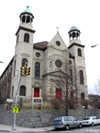 |
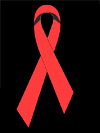 |
|
Morrisania had the highest numbers of deaths from AIDS in the city.
|
|
One of the reasons that we did these profiles is we wanted to be able to characterize neighborhoods -- not to stigmatize anybody, but to say this is where we have challenges and we all need to work on doing something about that.
Gotham Gazette: I would imagine there is a pretty stark income difference between those two communities. Does one see that in general -- that in poorer neighborhoods you have higher rates of preventable deaths, premature deaths and other health problems than in more affluent areas. Or is it not that clear cut?
Cari Olson: A very complex set of factors dictates why we see certain disparities between neighborhoods but absolutely one big piece is income and neighborhood resources. When the first profiles came out, one of the things that the Department of Health did was use them to identify the three areas of New York City where we were seeing the highest burden of preventable illnesses. Those three areas are the South Bronx, Central and East Harlem, and North and Central Brooklyn. In those neighborhoods, the department created a district public health office that could work directly with the people who were already working hard on health issues at the neighborhood level.
With the new profiles, we saw improvements in those neighborhoods as well as others, but we still see that those neighborhoods and the people living there are facing the biggest challenges. Income and the resources available are definitely a part of that.
HEALTH AT THE NEIGHBORHOOD LEVEL
Gotham Gazette: How did these profiles come about?
Cari Olson: We did the first community health profiles in 2003. We were trying to provide data on the health of New Yorkers so they could understand how health looks at the neighborhood level. If you live in Chelsea, you’re going to have different health concerns than if you live in Bay Ridge.
These 2006 profiles are the new and improved version. We have more statistics, and we’re using the “Take Care New York” priorities that are established by the New York City health department. These are the 10 areas of illness and disease that are causing the most health problems for New Yorkers and are the ones we can do something about, that are amenable to change.
In these new profiles, we provide time trends. People can not only compare their neighborhood to the borough and to New York City overall, but they can also see how health has changed from 1995 up through 2004.
Gotham Gazette: How do you put these together?
Cari Olson: It’s actually a lot of fun. We take a lot of different data sources. We use the Community Health Survey that we do every year. We call up 10,000 New Yorkers and ask them a lot of questions about their health, their access to health care, and preventative health things that they’ve done for themselves. We ask them, “Do you have a regular doctor?” “Do you have health insurance?” “What’s your height and weight?” We ask them whether or not they’ve gotten cancer screening. We ask them about sexual behavior, about using condoms, about getting HIV tests.
Another source is in-patient hospitalization records from the New York State Department of Health. We have the record of every single hospitalization of any New Yorker anywhere in New York City.
 |
 |
|
The Rockaways had the greatest number of deaths from heart disease.
|
|
We also have vital statistics data. That includes death, or mortality data, and birth data from death certificates and birth certificates. We can use those data to look at the different causes of death in New York City. The same thing with births. We can see whether women are getting pre-natal care and where they get it, look at births to teenagers, things like that.
Gotham Gazette: These profiles are divided in 42 communities. What do those 42 areas reflect?
Cari Olson: We use the United Hospital Fund neighborhoods, created by the United Hospital Fund, which is a non-profit organization in New York City. They are aggregates of ZIP codes and were created to as closely as possible reflect neighborhoods that New Yorkers think of as being neighborhoods.
A lot of people ask us, “Why didn’t you use community boards,” or City Council districts? The issue with that is that a major source of our data is surveys. If I call someone and ask, “What council district do you live in?” how many people do you think would be able to tell me? Pretty much nobody. But everyone knows their ZIP code.
MORE OBESITY, LESS SMOKING
Gotham Gazette: You mentioned earlier that overall we’re a healthier city. But there has been a lot of discussion of the increase in obesity and diabetes. What do these profiles tell us about that?
Cari Olson: One fifth of all New Yorkers -- 20 percent -- now are obese, but the percent of obese adults differs between New York City neighborhoods. For example, about one in 10 adults on the Upper East Side and in neighborhoods like Grammercy Park and Murray Hill are obese. That’s compared to about three in 10 adults or 30 percent in East Harlem and in East New York [which has the highest rate].
We see obesity going up across the city, regardless of neighborhood, but also we see disparities between neighborhoods. It’s something we really want to focus on because heart disease is a huge issue for New Yorkers and for the United States. [The Rockaways had the greatest number of deaths from heart disease.]
We hope that all of the work that’s been done, particularly in the area of smoking and more and more in the area of exercise and obesity, will make a dent in this. It’s definitely a big issue and something we want individuals to be focusing on.
We want to help provide people with the things that will contribute to their health. We can say you need to exercise and eat healthy foods, but if you don’t have a safe and affordable place to exercise and you don’t have a place to buy fruits and vegetables, then that’s a problem. Those are the kinds of things that we’re trying to create.
In Harlem, we’re doing programs around the bodegas. They also have exercise programs and have started walking clubs and things like that -- trying to help give people options to do the things that will help improve their health.
I can’t emphasize enough how much we depend on our partners in the community, not just non-profit organizations and other programs, but also individuals. This is something we have to do together. We also need to partner with people so that we can make health better.
Gotham Gazette: If obesity is the bad news, are there one or two things in the data that are really good news?
Cari Olson: Everybody who works in public health in New York City thinks it is good news that the smoking rate in New York has decreased. That’s the single easiest and best thing you can do for your health. You can’t look at that data without getting excited about it.
THE FIRST STEP TO HEALTH -- A REGULAR DOCTOR
 |
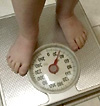 |
|
East New York in Brooklyn has the highest rate of obesity in the city.
|
|
Gotham Gazette: What other changes can you point to?
Cari Olson: It’s very hard to look at changes in health over a short period of time. But in a couple of neighborhoods we’re seeing that people are more likely to have a primary care doctor. That is the first “Take Care New York” priority because the entryway to having more control over your health is having a connection and a place to go for health care. A regular doctor is a way to do that. In Southwest Brooklyn, for example, when we asked people in 2002 if they had a regular doctor, 74 percent said that they did. In 2004, 86 percent said that they had a regular doctor. That’s a dramatic increase.
Gotham Gazette: Do you have any idea what might have caused that?
Cari Olson: We would like to hope that maybe people are seeing some of the information about how they need to have a regular doctor. I don’t know why that happened but the fact that it happened says to me that we are changing some of the environment around health in New York City neighborhoods so people know this is something that’s important. We saw similar increases in Southeast Queens.
RABID ANIMALS AND AVID DRINKERS
Gotham Gazette: Looking at the report, the Neighborhood Health highlights are interesting. Could you explain those?
Cari Olson: That was my favorite part of the project. The first profiles were all exactly the same -- you have the same statistics for everybody -- but in this new version, we decided, let’s look at each neighborhood and choose one topic that’s of particular importance in this neighborhood, something that these residents should really think about.
We went through every single neighborhood, and we looked at where it really stands out from the rest of the city -- everything from the issue of rabies and animals up in Kingsbridge and Riverdale, the number one place where rabid animals have been found, to sexually transmitted infections in several neighborhood where they have the highest rates of gonorrhea, chlamydia and syphilis. We looked at binge drinking in a lot of the neighborhoods. Higher income neighborhoods, like the Lower East Side and Greenwich Village, have higher rates of binge drinking than other neighborhoods. We looked at falls among older adults. We looked at the uninsured. It just depended on the neighborhoods.
Gotham Gazette: Are people who are incarcerated reflected in the profiles?
Cari Olson: All of the survey data use data from adults 18 and older who are non-institutionalized. It means they’re not in jail. It also means that if you were in a live-in health facility, you wouldn’t be included in that data. However our hospitalization data, our birth and death data, include all New Yorkers.
Gotham Gazette: There don’t seem to be many environmental figures in the profiles.
Cari Olson: We get that question a lot. One of the issues with environmental data is it’s hard to find on the neighborhood level. That’s one of the reasons that it’s relatively sparse in the profiles. But in the first profiles we did do lead poisoning among children.
USING THE NUMBERS
Gotham Gazette: What has the city government done with all this data?
Cari Olson: There have been a lot of different programs. To give you one example, in the East and Central Harlem district, in order to address the issues around obesity and heart disease, we did a big campaign to get one-percent milk into the bodegas. Another example: In North and Central Brooklyn, there’s a newborn visiting program where every woman who has a baby gets a visit from a health professional to talk about “what do I need to think about in my home caring for this child?”
Gotham Gazette: Who is the audience for the Community Health Profiles?
Cari Olson: We want everybody to read them, but we’re really focusing on providing data to individuals trying to effect change in New York City. That can be a regular community member.
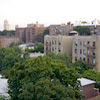 |
 |
|
Riverdale is the number one place where rabid animals have been found.
|
|
We are also looking at professionals in the non-profit community, or the research community, folks who are doing programmatic work around health and related issues. For example, the issues around housing are wrapped up in the issues around health. So if there’s an organization that’s focused on housing, they might want to know, “What is the health of the neighborhood I’m trying to get housing for?” We try to create data people can use to support the work that they’re doing.
Gotham Gazette: How do you see these groups and individuals using the information?
Cari Olson: We want them to understand the health of the people that they work with. Secondly we see this data as helping them get grants and funding. They can use the profiles to provide evidence [for their claims about] different health issues that they want to address. If someone in Central Brooklyn wants to provide exercise opportunities for youth, all they have to do is turn to the page in the profile and show heart disease is a big issue in this neighborhood.
The data can be a sort of baseline. If you’re trying to affect smoking rates, you can use our data to see if that’s changed over time. And we want people to do community education. We want them to get out there and talk to individuals about the data.
“THE WHY IS HARD”
Gotham Gazette: In this report you can see that in a certain neighborhood, people have lower rates of cancer screening, for example, than those in other parts of the city. The report doesn’t say why. Where can people go for that?
Cari Olson: The why is hard. The short answer is that it’s complicated. The long answer is that it’s about a lot of things, not just individual behavior but access in the community to health care, a supportive environment for making healthy choices and recognizing that disparities are linked to a lot of other social inequalities, like income, employment and housing. What we hope is that people look at these profiles and then say, “I see there’s a problem with cancer screening. Why would that be? What are the possible reasons?”
GETTING MORE ANSWERS
Cari Olson:: We at the health department have other publications that can help. We do the Vital Signs publications, which focus on particular health issues and then break down more of the information.
We did one on cervical cancer and found that women who are foreign born are less likely to get cancer screenings than women who are born in the United States. That could be partially because they don’t have [access to] health care. And it could also partially be because they don’t realize it’s something that should be part of their health care. Maybe that’s just not a message that they heard where they were before. That kind of information can help us focus our programs.
Our Web site has some amazing information. If you go to nyc.gov/health, on the left there’s a link to “My Community’s Health” On that Web page, you can get all of our different publications.
You can look up your Community Health Profile -- the whole thing in pdf and read through. But you can also get things like our health disparities report. There’s a recent report on bicycle fatalities and injuries. An immigrant health report. The summary report on births and deaths. ,which are brief reports on certain health topics like mental health and adolescent health.
We also have an on-line interactive health data system called EpiQuery where you can go and ask your own question: “It’s interesting that obesity is increasing in New York City but I want to know if it’s different between men and women.” You can go on-line and then essentially do the analysis just by clicking your mouse. You can look at obesity by sex and maybe you also want to look at it by race. That’s really handy particularly for professionals who look at the profiles and say, “You just made me hungry for more. I want to know more information.”
THE NEXT STEPS
Gotham Gazette: Is there any other city in the country that does anything like this?
Cari Olson: My first answer is no. But since putting these out I heard similar reports are being put together. A woman in Utah called, and she wanted to talk about how we’re doing our reports because they’re trying to do the same things. There’s certainly work in public health across the country that’s looking at community level data but I have never seen reports that are as readily available as the ones that we have and as comprehensive.
Gotham Gazette: You do these every two years. So have you already done your surveys for the next profile?
Cari Olson: The Community Health Survey is taken every year. We already have data for 2005, and we’re currently doing the survey for 2006. These data will be made available to the public on our Web site as we get them finished.
 |
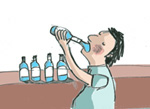 |
|
Greenwich Village and Lower East Side, have higher rates of binge drinking than other neighborhoods.
|
|
Gotham Gazette: Are there things you are looking to add or change before you release the 2008 profiles?
Cari Olson: In many ways, we ask the same things and present the same information from year to year so that you can look at the old profile and compare it to the new one. But when I go out and talk about this in the community, people bring up great ideas of things that could be added. One thing that we hear is, “Tell us more on the neighborhood level what programs are available.” So maybe we could add a component that would be about that.
We’re always trying to focus on areas of particular importance. We wanted to get an idea if the length of time a person who is foreign born has spent in New York City impacts their health. So we added a question -- I think in the 2005 survey -- about how long have you lived here. And we’re doing analysis around that. We’re always trying to expand what we can say about health in New York City so that people can be making good decisions.
Gotham Gazette: Is this only available online?
Cari Olson: No, no, no. If people are interested in these, they can call 311 and order hard copies of as many profiles as they would like. We are also doing presentations in communities. Myself and other professionals at the Department of Health are ready to come out and talk to groups about the profiles, about the health of their neighborhood, about what’s being done and start dialogues. We’re excited to partner with people and help people use this data. So if they have questions or are interested we hope that they’ll get in touch. There is information on the profiles on how to do that and we have an email address that’s only for the profiles. It’s This email address is being protected from spambots. You need JavaScript enabled to view it..
Â
Health Problems Among Caribbean Immigrants
Swiveling on a stool behind the wood counter at the hair salon where she works, Leandra Stewart pats her flat belly. For the last few years she has had cramping near her naval during her menstrual cycle, and it has only gotten worse in recent months.
If only she had had regular checkups when she arrived from Trinidad seven years ago, she said, she might be diagnosed by now. But then, at 29 with no health insurance, she had more pressing issues to deal with. Steward visited a gynecologist in the United States for the first time last month and is now awaiting the results of blood tests.
"I didn't have the option to go to the doctor as soon as I came." she said. "My pain had gotten worse, but you have to pay that fee and I didn't have money at the time."
A new study shows that recent immigrant women are 24 percent less likely to get a gynecological checkup than women born in the United States. And according to the Cancer Awareness Network for Immigration Minority Populations, English-speaking Caribbean women in Brooklyn are more likely to be diagnosed with advanced stages of cervical cancer than black women born in the United States. Because a large portion of the foreign born population in Prospect Heights is from the Caribbean, health is a major concern for these women. By their own admission and physician observation, a lack of funds and serious cultural barriers prevent them from getting checkups.
Prospect Heights sits in community district eight where, according to the 2000 U.S. census, 71 percent of the foreign born population is from the Caribbean, mostly from Trinidad, Tobago and Jamaica.
Dr. Desmond Browne, who emigrated from St. Vincent 20 years ago, has one of the only family medical practices in the neighborhood. Dr. Browne said that many of the recently immigrated Caribbean women who have come to his office say they have never had a pap smear, most likely because they have limited access to insurance and they are uneasy in the new and unfamiliar setting.
Last year, a woman came into his office with her husband, who, Dr. Browne said, acted like a dictator, telling the doctor where his wife was hurting. Dr. Browne was unable to make a diagnosis because it was unclear whether the wife was telling her husband the whole story.
"You really need to get it from the right source," he said.
"Obviously these are very smart women, but they have a slightly reduced exposure to these things in their communities."
A recent study, conducted in 2006 by UICC World Cancer Congress, in Washington DC, said that the disparity in gynecological checkups is possibly due to lack of acculturation. Dr. Browne agrees. He said women immigrants are usually the last in the family to adjust to their new lives. While they are at home, children are learning about American culture at school and husbands are assimilating at work. However, the Cancer Awareness Network suggested that a reason these women are slow to get checkups is not that they are sheltered at home. It is that they lack the time for checkups because they are busy managing their work and family.
Many of the women interviewed said that when they arrived they simply had a lot on their minds. Stewart said she found it impossible to obtain working papers. And as an illegal immigrant without those papers, she could not get health insurance.
Dr. Browne said he works with medical labs that are willing to lower their prices when patients do not have insurance. Usually he can get labs to do tests for about $150 and he will only charge $40 to $50 per visit, which comes to about half of the usual price of $80.
There are no free clinics in the neighborhood, but in neighboring Crown Heights, the Community Healthcare Network runs a center geared toward the Caribbean population. It is called the Caribbean House Health Center. However, many women are unaware that these services exist, or do not know how to locate them.
"We do not turn anyone away," said center director, Joy Drummond.
"We accept everyone, but most of the patients we see are West Indian immigrants."
Some women in the neighborhood said that they have made emergency visits to hospitals. However, many fail to get a complete exam. Ena Jackson, 57, cook at The Jamaican Bakery in Prospect Heights, who arrived from Jamaica seven years ago, said that she sees a private doctor for skin problems. Her doctor wants her to undergo tests, but she cannot afford to get a "head to toe" exam.
Stewart, on the other hand, finally has a work permit that allowed her to get health insurance.
Her blood tests came back negative, but the pain persists. Perhaps her appointment with Dr. Browne will reveal the source of the problem.
"Well, I'm kind of getting used to the pain now," she said.
Â




